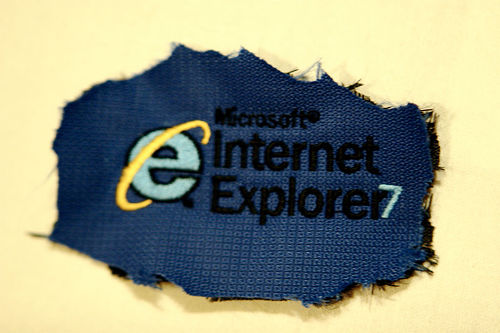New Microsoft IE zero-day flaw under attack


On the same day it issued software fixes as part of its Patch Tuesday schedule, Microsoft released a pre-patch advisory to warn of the risk of remote code execution attacks against users of IE 6 and IE 7.
From the advisory:
Our investigation so far has shown that Internet Explorer 8 and Internet Explorer 5.01 Service Pack 4 on Microsoft Windows 2000 Service Pack 4 are not affected, and that Internet Explorer 6 Service Pack 1 on Microsoft Windows 2000 Service Pack 4, and Internet Explorer 6 and Internet Explorer 7 are vulnerable.
The vulnerability exists due to an invalid pointer reference being used within Internet Explorer. It is possible under certain conditions for the invalid pointer to be accessed after an object is deleted. In a specially-crafted attack, in attempting to access a freed object, Internet Explorer can be caused to allow remote code execution.
The company made it clear that the newest version of the browser -- Internet Explorer 8 -- was not affected by this vulnerability.
Some additional mitigations:
- Protected Mode in Internet Explorer on Windows Vista and later Windows operating systems helps to limit the impact of the vulnerability as an attacker who successfully exploited this vulnerability would have very limited rights on the system. An attacker who successfully exploited this vulnerability on Internet Explorer 6 or Internet Explorer 7 could gain the same user rights as the local user. Users whose accounts are configured to have fewer user rights on the system could be less affected than users who operate with administrative user rights.
- In a Web-based attack scenario, an attacker could host a Web site that contains a Web page that is used to exploit this vulnerability. In addition, compromised Web sites and Web sites that accept or host user-provided content or advertisements could contain specially crafted content that could exploit this vulnerability. In all cases, however, an attacker would have no way to force users to visit these Web sites. Instead, an attacker would have to convince users to visit the Web site, typically by getting them to click a link in an e-mail message or Instant Messenger message that takes users to the attacker’s Web site.
- By default, Internet Explorer on Windows Server 2003 and Windows Server 2008 runs in a restricted mode that is known as Enhanced Security Configuration. This mode sets the security level for the Internet zone to High. This is a mitigating factor for Web sites that you have not added to the Internet Explorer Trusted sites zone.
- By default, all supported versions of Microsoft Outlook, Microsoft Outlook Express, and Windows Mail open HTML e-mail messages in the Restricted sites zone, removing the risk of an attacker being able to use this vulnerability to execute malicious code. The Restricted sites zone helps mitigate attacks that could try to exploit this vulnerability by preventing Active Scripting and ActiveX controls from being used when reading HTML e-mail messages. However, if a user clicks a link in an e-mail message, the user could still be vulnerable to exploitation of this vulnerability through the Web-based attack scenario. Additionally, Outlook 2007 uses a different component to render HTML e-mail, removing the risk of this exploit.
- Modify the Access Control List (ACL) on iepeers.dll
- Set Internet and Local intranet security zone settings to "High" to block ActiveX Controls and Active Scripting in these zones
- Configure Internet Explorer to prompt before running Active Scripting or to disable Active Scripting in the Internet and Local intranet security zone
- Enable DEP for Internet Explorer 6 Service Pack 2 or Internet Explorer 7